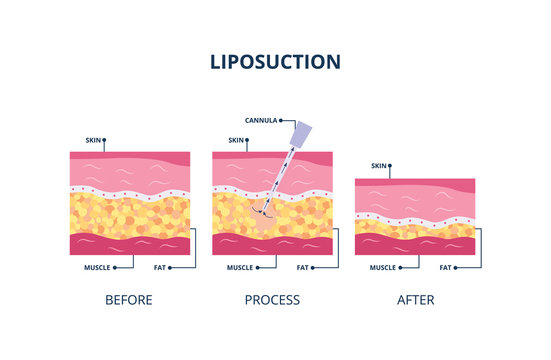Liposuction, like any surgical procedure, comes with its own set of risks and potential complications. It’s essential to be aware of these before considering the surgery. Here are some of the risks and complications associated with liposuction:
1. Infection: Infection is a risk with any surgical procedure. Surgeons take precautions to minimize this risk, but it can still occur. Signs of infection include fever, increased pain, redness, and swelling at the incision sites.
2. Bleeding: Liposuction involves the removal of fat, which can lead to bleeding. Excessive bleeding can result in the formation of hematomas (pockets of blood), which may require additional procedures to address.
3. Fluid Imbalance: Liposuction often involves injecting a fluid (tumescent solution) into the treated area to facilitate fat removal. In rare cases, this can lead to fluid imbalance, affecting the heart and lungs. This is more common with large-volume liposuction.
4. Contour Irregularities: Uneven or irregular contours may develop, leading to lumps, bumps, or depressions in the treated area. This can be due to uneven fat removal or uneven healing.
5. Numbness or Altered Sensation: Temporary or permanent numbness, tingling, or altered sensation in the treated area can occur. It may take several months for sensation to return fully, if at all.
6. Skin Irregularities: Overcorrection or under correction of fat removal can lead to noticeable skin irregularities, such as skin dimpling or laxity.
7. Scarring: While liposuction incisions are typically small, they can still result in visible scars. The appearance of scars varies from person to person.
8. Pulmonary Embolism: In very rare cases, fat particles dislodged during liposuction can enter the bloodstream and cause a pulmonary embolism, a potentially life-threatening condition.
9. Anesthesia Risks: Liposuction is usually performed under general or local anesthesia, and there are inherent risks associated with anesthesia, including allergic reactions and complications related to anesthesia administration.
10. Asymmetry: Achieving perfect symmetry is challenging, and there may be slight differences between the treated areas.
11. Inadequate Results: In some cases, patients may not achieve the desired results, or the fat may re-accumulate over time if there are significant changes in lifestyle.
12. Seroma: Fluid accumulation (seroma) can occur in the treated area and may require drainage.
13. Skin Discoloration: Changes in skin pigmentation, including hyperpigmentation (darkening) or hypopigmentation (lightening), can occur.
14. Allergic Reactions: Some individuals may experience allergic reactions to medications, materials, or solutions used during the procedure.
15. Delayed Healing: Some patients may experience delayed wound healing, which can increase the risk of infection or scarring.
It’s essential to consult with a board-certified plastic surgeon to discuss the specific risks associated with liposuction, as well as any individual factors that may influence your risk profile. They can provide personalized guidance, address your concerns, and help you make an informed decision about the procedure. Additionally, following your surgeon’s pre- and post-operative instructions is crucial in minimizing these risks and optimizing your recovery.
It’s important to have a detailed consultation with a qualified plastic surgeon to discuss the potential risks, benefits, and expected outcomes specific to your situation than Consult Dr. Amiti Shah one of the best Plastic surgeon in Mumbai.




